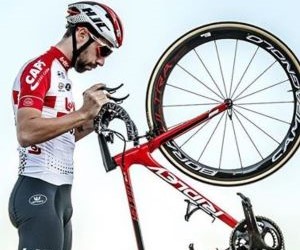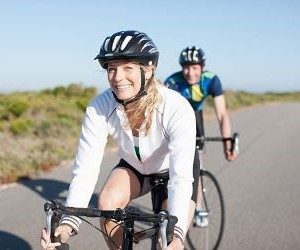HOW DO I IMPROVE EFFICIENCY IN TRIATHLON CYCLING?
Looking to crush your next triathlon? Improving cycling efficiency is a game-changer. From gear optimization to strategic pacing and training hacks, this guide breaks down proven ways to cycle smarter, not harder. Master the bike leg, save energy for the run, and climb the leaderboard with these science-backed, real-world tested methods tailored for every level of triathlete.

Dial in your bike fit
Why bike fit is your secret weapon
One of the most overlooked yet critical elements of triathlon cycling efficiency is proper bike fit. Even marginal misalignments can lead to energy leaks, discomfort, and overuse injuries. A professional bike fit adjusts your saddle height, cockpit reach, cleat position, and handlebar angles to match your body geometry. The goal is maximizing power transfer while minimizing drag and fatigue.
A good fit optimizes biomechanical alignment and reduces unnecessary movement that wastes watts. Studies show that athletes with optimized fits improve time-trial performance by up to 5% while reducing perceived exertion.
Key adjustments to consider
Saddle height: Ensures full leg extension without rocking hips
Stack and reach: Balances comfort with aerodynamics
Cleat positioning: Aligns foot-knee-hip for efficient pedal stroke
Arm pad height and width: Reduces shoulder tension and wind resistance
Handlebar tilt: Helps maintain aero position longer
Don’t DIY this—get a qualified bike fitter or use motion capture technology. A proper fit isn’t just for pros; it’s a baseline requirement for every serious triathlete.
Master your pedal stroke
The science of smoother cycling
Most cyclists waste power during inefficient pedal strokes—especially at the top and bottom of the pedal cycle. A smooth, circular stroke ensures more consistent torque and reduces muscular fatigue over long distances. Unlike road racing, triathlon demands steady output, so efficiency trumps brute strength.
Using power meters and pedal dynamics sensors, athletes can identify dead spots and work on 360-degree engagement. The goal: make every degree of rotation count.
Techniques to improve stroke efficiency
Single-leg drills: Improve neuromuscular control and balance stroke symmetry
High-cadence intervals: Encourage smoother transitions through the stroke
Power phase analysis: Identify weak zones using smart trainers or pedals
Torque effectiveness metrics: Focus on pushing and pulling evenly
Core engagement: A stable core supports efficient lower-body movement
Use these techniques during dedicated bike sessions and brick workouts. Over time, you’ll build muscle memory for fluid, efficient motion that pays dividends late in the ride and on the run.
Reduce drag and save watts
Aerodynamics: The ultimate marginal gain
In triathlon, especially long-course events, reducing drag can have a larger impact than increasing fitness. According to wind tunnel data, up to 80% of resistance on flat terrain comes from the rider, not the bike. That means your position, clothing, and gear setup matter—a lot.
Every watt saved via improved aerodynamics is a watt you can use later in the race. And unlike fitness gains, which take months, aerodynamic improvements are often immediate with the right gear and setup.
Top aerodynamic upgrades
Aero helmet: Designed to smooth airflow and reduce head drag
Tight-fitting tri suit: Reduces flapping and turbulence
Deep-section wheels: Lower drag on flat to rolling terrain
Integrated hydration: Minimizes cockpit clutter and improves airflow
Consistent aero position: Practice holding it for long durations
Don’t forget environmental testing. Use a smart trainer and fan for indoor aero trials, or test outdoors with a power meter and GPS. Know your drag coefficient, experiment with body positioning, and let the data guide your adjustments.






